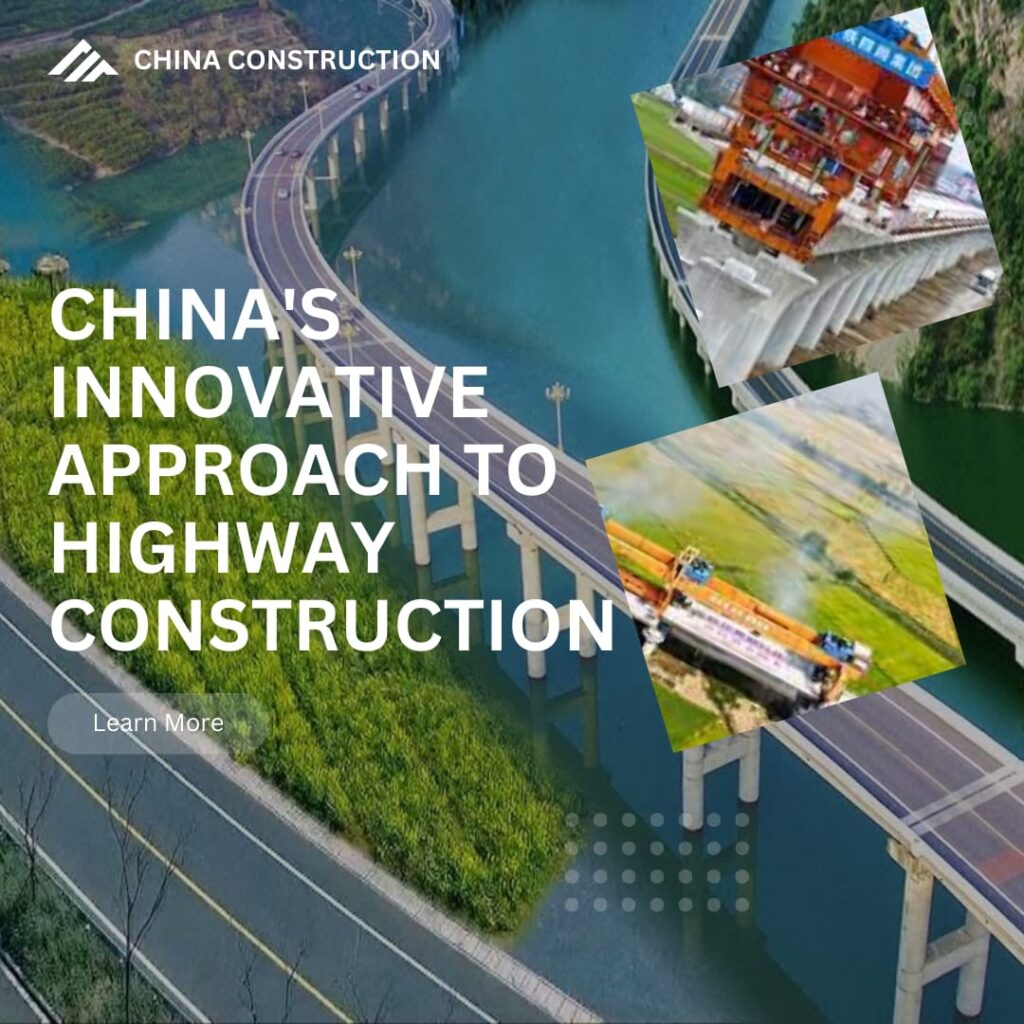China Innovative Approach to Construction

China’s Innovative Approach to Highway Construction
China’s Innovative Approach to Highway Construction: Preserving Agricultural Land and Water Resources. In recent years, China has undertaken an ambitious expansion of its highway infrastructure to bolster economic growth and enhance connectivity across the nation. Remarkably, this development has been achieved with a keen awareness of environmental and agricultural preservation. A standout feature of this initiative is the approach taken to build highways without significantly impacting farmers’ fields and traditional ponds, highlighting a model of sustainable infrastructure development.

China’s Innovative : Integrating Infrastructure with Agriculture
Traditionally, large-scale infrastructure projects, particularly highways, often encroach upon agricultural land, displacing farmers and disrupting local ecosystems. However, China’s approach has been markedly different. By prioritizing innovative engineering and planning techniques, the government has managed to expand its highway network while minimizing the impact on farming communities.
One of the key strategies involves the use of elevated highways and bridges. These structures are designed to pass over existing fields and ponds, thereby preserving the land underneath. Elevated highways allow for the continued use of farmland and maintain the ecological balance of water resources. This approach not only supports agricultural activities but also ensures that local communities can maintain their traditional ways of life.
Technological Advancements and Planning
China’s highway construction projects have incorporated advanced technologies that aid in reducing environmental impact. Satellite imaging and Geographic Information Systems (GIS) are used extensively in the planning phase to identify the least disruptive routes for highways. By analyzing land use patterns, engineers can design highways that navigate around sensitive areas, including agricultural fields and water bodies.
Furthermore, the implementation of noise reduction barriers and pollution control measures helps mitigate the impact of highways on nearby communities. These considerations are part of a broader effort to ensure that infrastructure development does not come at the expense of environmental health or agricultural productivity.
Case Studies of Success
Several projects exemplify China’s commitment to preserving agricultural and water resources. For instance, the construction of the G15 Expressway involved complex planning to avoid disrupting extensive rice paddies and fish ponds. By employing a combination of elevated roadways and careful route selection, the project succeeded in integrating transportation needs with environmental conservation.
Another notable example is the development of the S1 Expressway, which carefully navigated around several key agricultural zones. In this case, engineers utilized viaducts and tunnels to minimize land use conflicts, ensuring that farming operations could continue uninterrupted.
Community Engagement and Benefits
China’s approach to highway construction has also included active engagement with local communities. Farmers and residents are consulted during the planning stages to address their concerns and incorporate their feedback. This collaborative approach helps in identifying potential issues early and devising solutions that benefit both infrastructure development and local communities.
By preserving agricultural land and water resources, China’s highway projects have helped maintain rural livelihoods and support local economies. The approach demonstrates a commitment to balanced development that respects both human and environmental needs.
Conclusion
China’s success in building highways without destroying farmers’ fields and ponds represents a significant achievement in sustainable infrastructure development. Through innovative engineering, advanced planning, and community engagement, the country has managed to expand its transportation network while preserving vital agricultural and ecological resources. This model offers valuable lessons for other nations striving to achieve similar balance between development and environmental stewardship.







